Contractors Will Cut Baltimore Bridge Wreckage With Hydraulic Shears
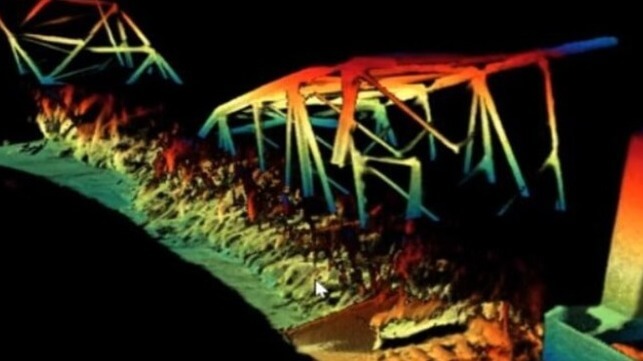
In a press briefing Wednesday, the head of the U.S. Army Corps of Engineers' Baltimore district gave fresh details on the plan to remove the wreckage of the Francis Scott Key Bridge. The steel through-truss bridge collapsed on March 26 after a container ship hit one of its piers, and the Navy Supervisor of Diving and Salvage is coordinating efforts to remove the resulting wreckage from the navigation channel.
According to Pinchasin, the next step for clearing the channel is to cut a 1,500-ton section of the center span into two pieces of about 750 tonnes each. These will be small enough to pick up with the largest crane available. (Some foreign-flag crane ships might be capable of a single-piece 1,500 tonne hoist, but the largest crane barge on the East Coast is limited to 1000 short tons.)
In order to cut the 1,500-ton section in half, a crane with a bucket dredge is working on digging a hole through the crumpled road surface of the span, she said. Once that's done, there will be enough access for divers to place hydraulic shears on the thick steel chords on the bottom of the bridge. When the divers are out of the way at a safe distance, the shears will be activated and the underwater section will be cut safely in two.
The unified command still plans to reopen a 35-foot-deep channel by the end of April and the full 50-foot channel by the end of May, Col. Pinchasin confirmed, adding that the timeline is firm and is based on rigorous engineering analyses.
In a statement Wednesday, Senator Ted Cruz (R-TX) criticized the unified command's pace, comparing it unfavorably to the speed of America's primary competitor.
“Given the importance of the port to the economy, one has to wonder - 'is our country treating this like an emergency?' I can’t help but think that China would have cleared the wreckage in days. I hope this episode doesn’t become another punchline about a nation in decline," Cruz said.
Separately, the National Transportation Safety Board's investigative team still remains on site and working in Baltimore, chair Jennifer Homendy said in a reconfirmation hearing in the Senate on Wednesday. The NTSB's staff are still interviewing crewmembers and collecting information. Homendy pleaded with senators for more funding for her staff, noting that she has to choose between basic maintenance on the NTSB office building or hiring enough marine investigators.
Investigators Suspect Electrical Fault Led to Baltimore Bridge Strike
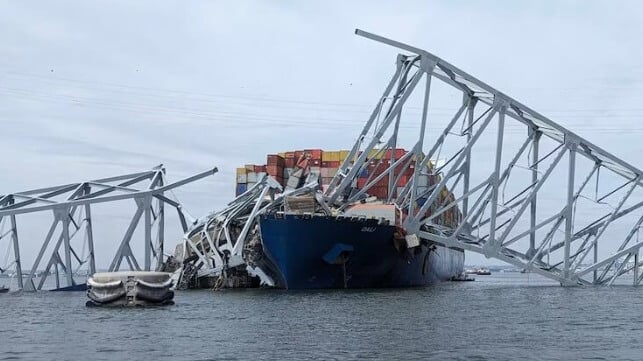
As the National Transportation Safety Board hunts for the cause of the boxship Dali's disastrous allision, investigators are looking closely at the electrical system, chair Jennifer Homendy told a Senate panel on Wednesday.
In the early hours of March 26, the Dali lost all power and propulsion as she approached Baltimore's Francis Scott Key Bridge. Unable to stop, the Dali drifted into one of the bridge's piers, collapsing the entirety of the through-truss center section of the bridge. Six workers who were patching potholes on the center span died in the collapse, and one worker was injured. Removing the wreckage is expected to take months, and rebuilding will take years.
NTSB investigators are looking at every possible factor in the incident. Tests of Dali's fuel have reportedly come back clean and on-spec, and officials have said that there are no signs of intentional wrongdoing; equipment faults are also on the list, and the OEM has sent experts to help NTSB comb through the Dali's systems for clues. Early signs point to the electrical system, Homendy said, and manufacturers' representatives have flown out to examine the vessel's circuit breakers in particular.
“That is where our focus is right now in this investigation,” Homendy told the Commerce, Science and Transportation Committee. “Of course, that’s preliminary. It could take different roads, different paths as we continue this investigation. It’s very early.”
Homendy has also said that investigators are looking at the bridge's design and its protection from ship traffic. The Key Bridge opened in the late 1970s, when most merchant ships were far smaller, and civil engineering experts have questioned whether the bridge was adequately updated to keep up with modern risks.
“Are these bridges protected for the types of traffic that is going through now? . . . If I was a state and the Department of Transportation, that’s what I’d be looking at now," said Homendy.
New Sonar Data Shows the Challenge of Clearing Baltimore Bridge's Wreckage
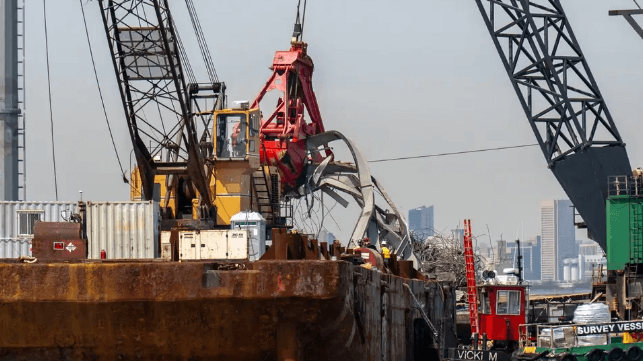
The U.S. Navy's Supervisor of Diving and Salvage (SUPSALV) has released new sonar imagery of the wreckage of Baltimore's Francis Scott Key Bridge, showing the full extent of the damage and the work that will be required to restore the main shipping channel.
Courtesy USACE / SUPSALV (click to enlarge)
The depiction shows that the tangled wreckage has significantly reduced the navigable depth of the center of the federal channel, including areas where no wreckage is visible above the surface. As USACE has warned before, the steel truss span disintegrated into a tangled mess when it hit the bottom, and its girders are visibly twisted together and embedded in the mud.
The 3D sonar survey was created through painstaking work by Navy salvage divers, who operated in darkness and near-zero visibility to assess the contours of the wreckage.
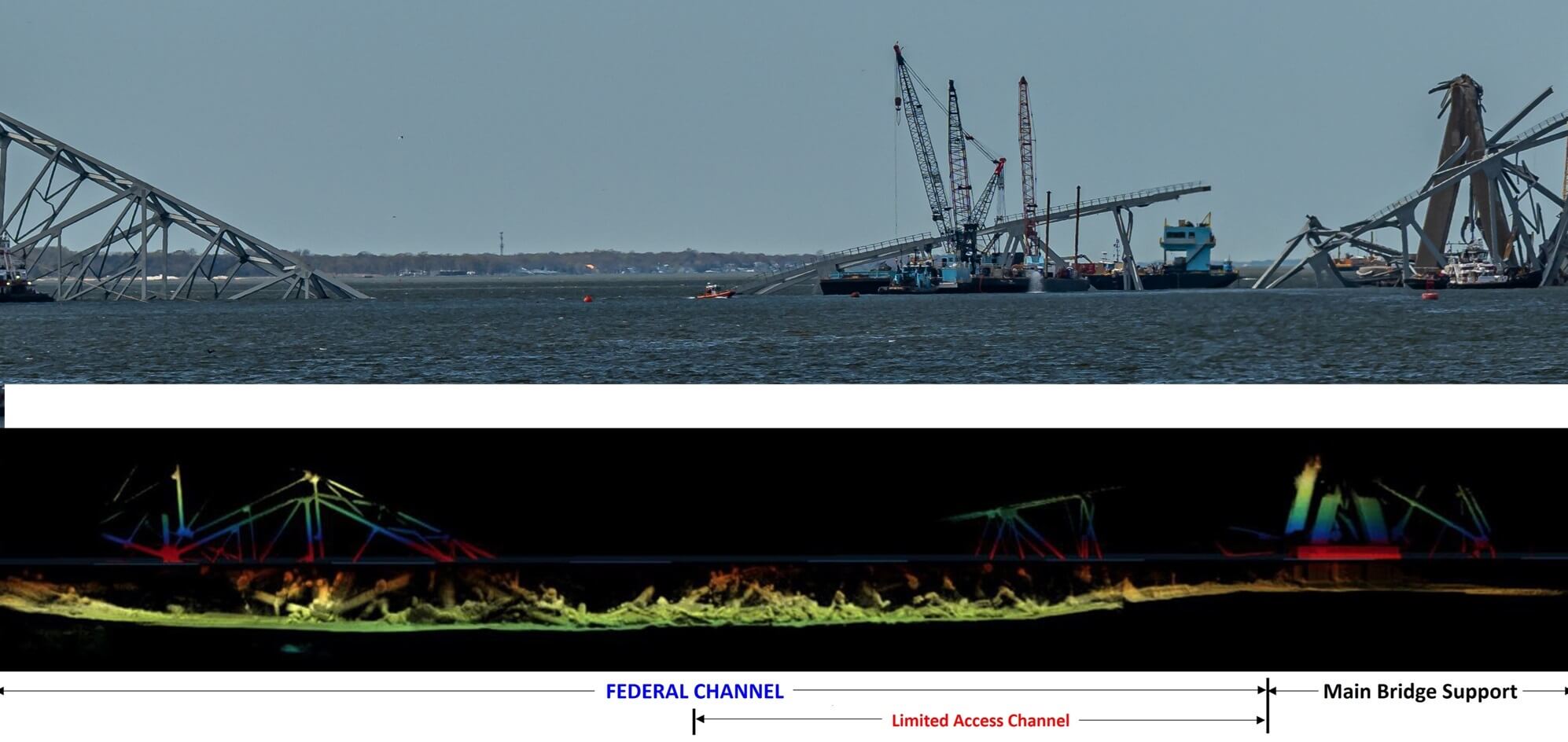 A panorama of Baltimore's ship channel (top) and a corresponding 3D sonar survey of the wreckage below water (bottom) (USACE / SUPSALV, click to enlarge)
A panorama of Baltimore's ship channel (top) and a corresponding 3D sonar survey of the wreckage below water (bottom) (USACE / SUPSALV, click to enlarge)
The diagrams show two separate areas of focus for the Army Corps-led salvage team. The first is a "Limited Access Channel," a 35-foot-deep fairway that contractors will clear on the north side of the center span. This will be big enough to allow ro/ros, barges and government vessels to go through. Clearing that channel will resolve minor national-defense effects of the bridge collapse: Four Military Sealift Command cargo ships are currently on the landward side of the bridge and cannot get out; meanwhile, several larger Coast Guard cutters are due to call in Baltimore for repairs and cannot get in, according to USNI.
The Limited Access Channel includes areas with significant underwater wreckage, which may be challenging to clear. However, it is also further away from the difficult operation to remove the container ship Dali, which is entangled with a section of the bridge truss. The delicate task of cutting Dali free is just beginning, and salvors are starting to hoist off intact containers from Dali's bow.
When the channel is restored, thousands of stevedores and others who depend on the Port of Baltimore will be able to get back to work. While the primary focus has been on containerized and ro/ro cargoes, Baltimore is also home to America's second-largest coal terminal, which has been shuttered by the channel closure. In its April outlook, the Energy Information Administration (EIA) said that U.S. coal exports will drop by fully a third this month and by 20 percent in May. The impact will reduce U.S. coal exports by six percent for the full year.
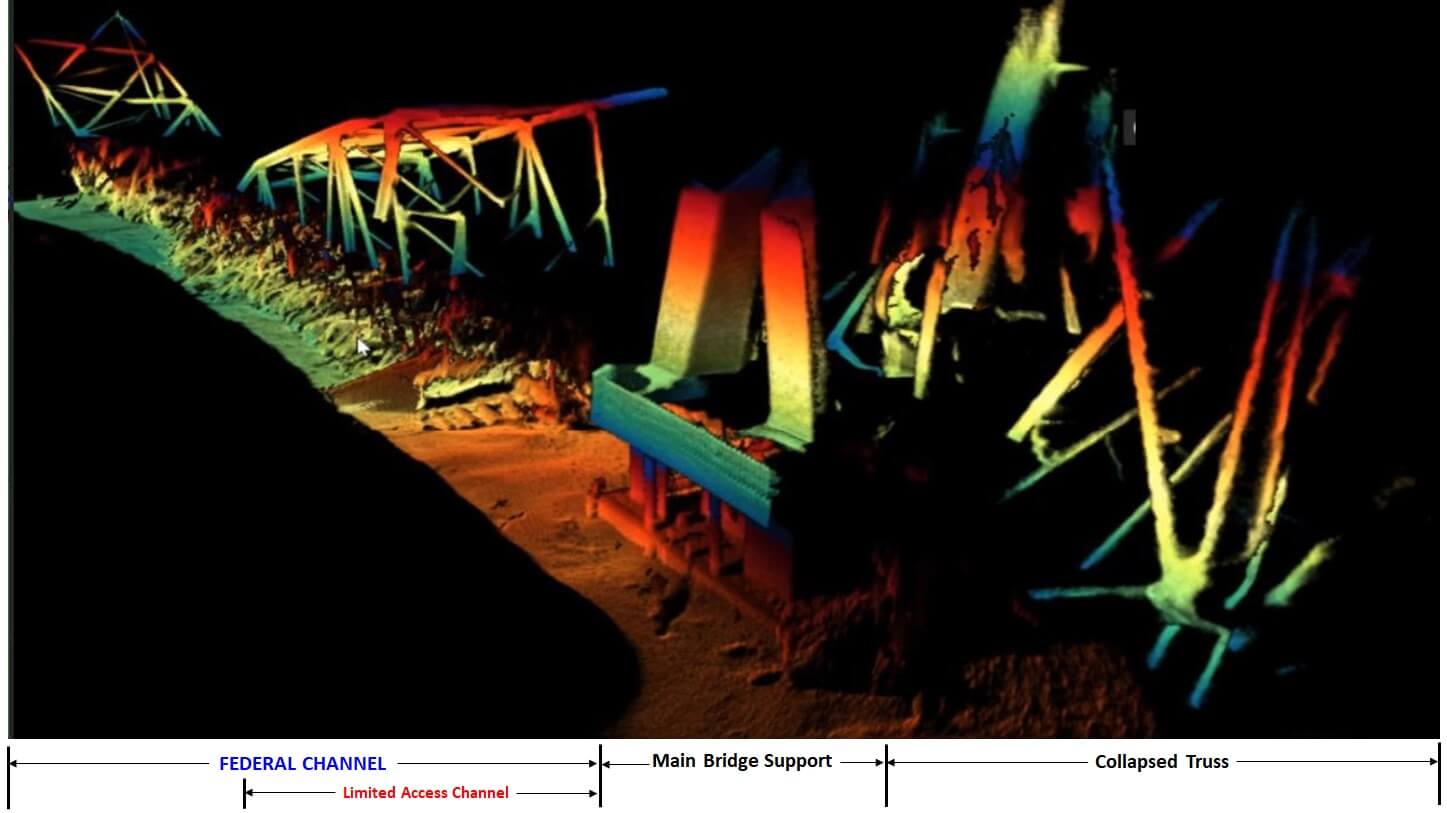
No comments:
Post a Comment